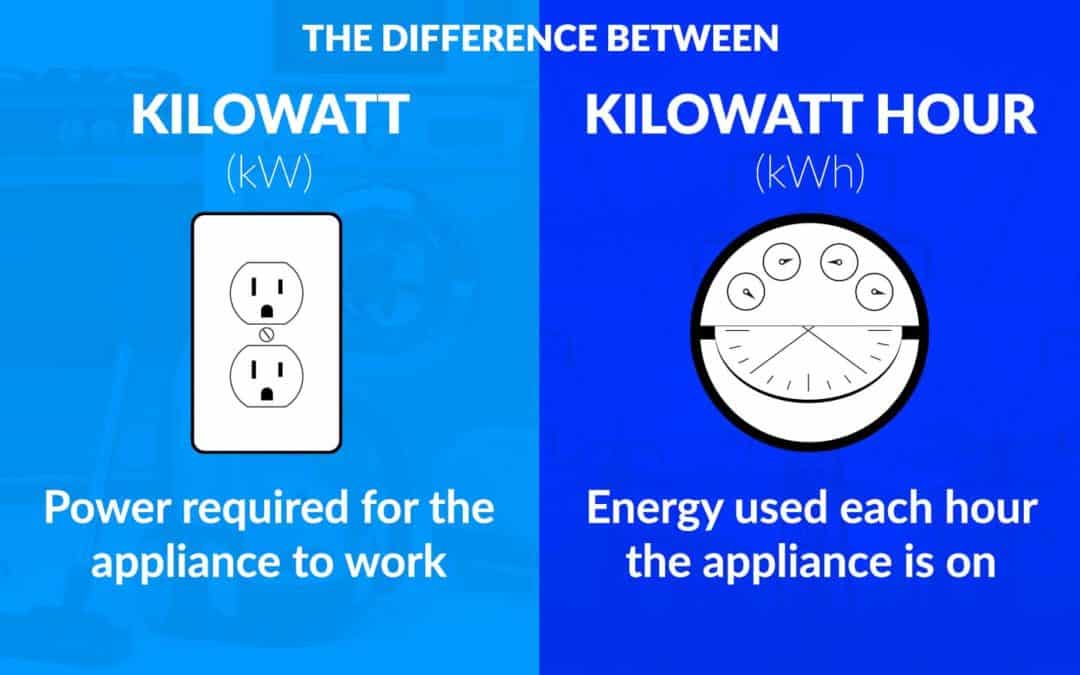Many of the terms used when designing and installing solar panel systems can be hard to understand. We here at Bright Solar Power California want to empower our customers with all the knowledge they need so they can make the best choice. When investing in solar power systems, it’s important to be armed with as much knowledge as possible. Let’s start with the kilowatt:
What is a kilowatt?
A kilowatt is a unit of energy equaling 1,000 watts (1 kW = 1000w). The International System of Units has defined a “watt” as a derived unit of 1 joule (the energy that is transferred TO an object) per second. A “watt” is basically just used to quantify the rate in which the energy transfers. Simply put:
JOULE – the ENERGY that is transferred
WATT – the RATE in which that energy is transferred
Appliances, like solar panels and air conditioners, are measured in kilowatts. This refers to the peak amount of power the appliance can produce or consume. Kilowatts are often referred to using the abbreviation, kW.
What is a kilowatt hour?
A kilowatt hour is usually shown as “kWh” and it’s the type of measurement you will see on your monthly utility bill. ONE kilowatt hour equals 1,000 watts used over one hour. Are you confused yet? To put it simply, imagine that your air conditioner uses 1kW and you left it on for one full hour. By doing this, you’d owe for 1 kwH (kilowatt hour) on your bill.
What is the difference between kW and kWh?
A kilowatt hour is a measure of TOTAL energy that refers to the amount of energy used over a period of time. Basically, it’s the electrical draw of the appliance in kilowatts multiplied by the TIME that the appliance is used.
A kilowatt is just a number that represents the most energy an appliance can draw in an instant.
Kilowatt hour is a better unit of measurement. It shows the total energy used ALONG with the amount of time it was used for.
There is no direct conversion from kW to kWh, since they are very different things. In order to get the kWh, there is a simple formula: take the kW used and multiply it by the hours being used.
How much does one kWh cost?
Research done by The Energy Information Administration found that the average home in the United States uses 867kWh per month. Meaning, the average energy usage per day in our homes is about 30kWh. The average cost for Americans is 15¢ per kWh across the country. However our state of California is a little higher. The cost of electricity varies a lot around the country, and California homes typically pay around 20¢ for every kWh they use.
How much kWh does my fridge use?
We will provide some examples of how to calculate kilowatt hours of usage for each specific appliance or device in your home. You can work out how many kilowatt hours each appliance in your home by multiplying the peak drawing capacity of the appliance by the amount of time it was used.
For instance, one kWh of electrical energy would also be used in each of the following cases:
- A single 20 watt light bulb was on for 50 hours
- One hundred 20 watt light bulbs were on for 30 minutes
- TV that uses 100 watts was being watched for 10 hours a day
- AC that uses 10kW (10,000 watts) was on for 6 minutes
One kilowatt hour (kWh) of energy is the standard unit used by utility companies to sell and buy electricity to consumers. It is important for homeowners to understand what a kWh is so you know what you’re paying for.
The Best Way to Cut Down Your Electricity Bill
Potential ways to cut down the kWh of electricity your home uses through energy efficiency depends on a few things. The amount of power your family currently uses, how efficient your home appliances are, and how much you are ready to change your lifestyle at home.
In some instances, you can get newer appliances that are made to be more efficient. Upgrading light-bulbs to new LED bulbs is a simple and quick way to reduce your energy consumption. Some appliances, like space heaters, consume a large amount of energy. It is best to find alternatives for these types of appliances, and to stop using them altogether.
For most residents that own single-family homes in areas with high electricity rates, like Southern California, solar panels are the best solution. With the right size solar panel system, you can save much more energy and money than using your electric utility.
Now that you know what a kWh is, you know what your utility company is charging you for. Hooray! Three cheers for knowledge!
Interested in going solar or simply just have questions?
We’re here for ya! You’ve heard the bad. We’ve got the truth. Contact us or give Bright Solar Power California a call at 760.545.5466 and speak to one of our awesome solar advisors for a free estimate and no-pressure consult!
We look forward to hearing from you!

